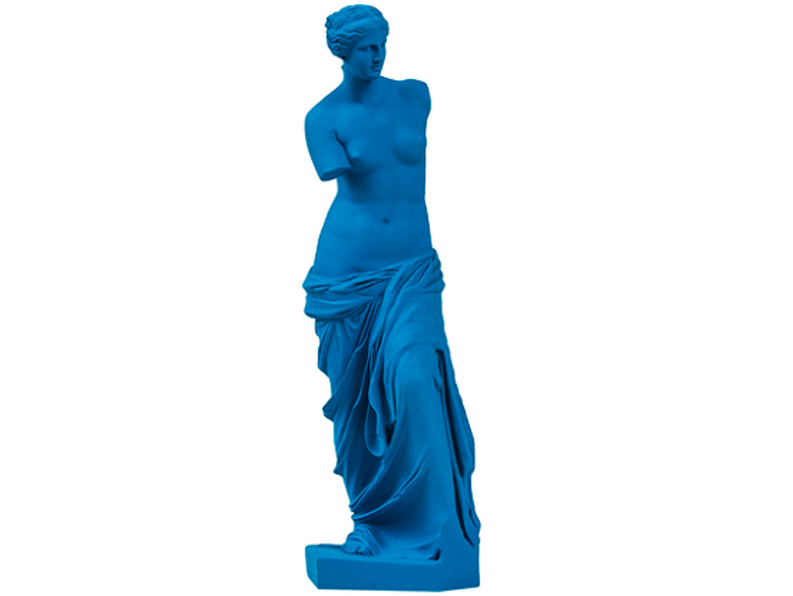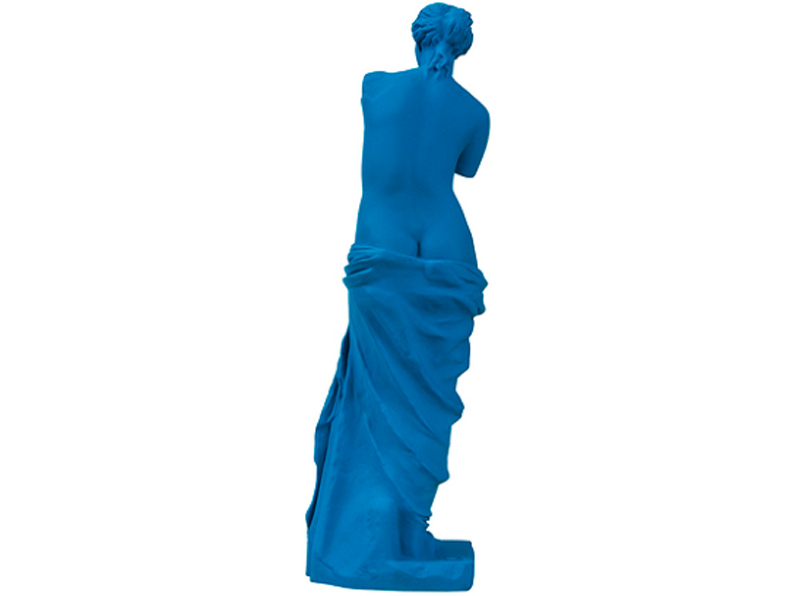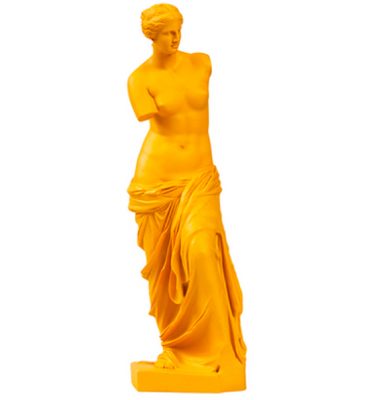Venus of Milo – Light Blue
MCL-SCU-888004
Aphrodite, goddess of love, beauty, pleasure, and procreation, known as the Venus de Milo
Contrary to conventional wisdom, the artists of antiquity did not choose marble for its pure whiteness. When studied under a microscope, many works reveal traces of red, blue, green or yellow pigments. Surprise: Greek sculpture was poly- chrome. In order to revive the spirit of antique sculpture, mistakenly thought to be austere, the Venus de Milo have been covered with bright colours.
A farmer discovered the statue near the ruins of an antique theatre on the island of Melos (Milo)in Greece in 1820. The Marquis de Riviere bought it and presented it to Louis XVIII in 1821. The king later gave it to the Louvre. The Venus de Milo occupies a foremost place in the history of Greek sculpture and the taste for the antique. Its style is characteristic of the late Hellenistic period, which was both classical and innovative. This swirling posture and the realistic modelling are strokes of genius.
The Venus de Milo was unanimously praised as soon as it was discovered. Its arrival in France was an event and a commemorative medal was struck for the occasion. Because of this veneration, it escaped the reconstruction of the missing limbs, which was a common practice in nineteenth-century restoration.
Original: The Cyclades, Greece – 2nd century B.C, now exhibited at Le Louvre Museum in Paris
Material: resin
Size: H 30 cm
Made in the « Département des Ateliers d’Art Moulage et Chalcographie, Le Louvre, Paris »
Video : The molding worshop at Musée du Louvre (in French)
Price: USD 199 / RMB 1,329 / 1,545


















